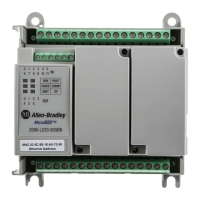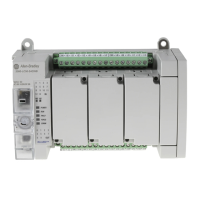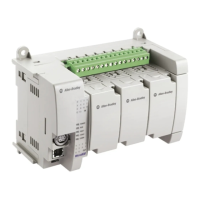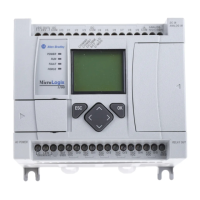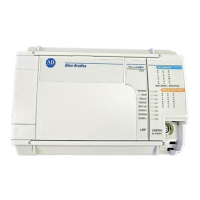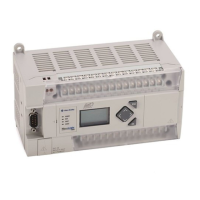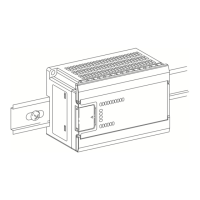Communication instructions Chapter 9
Rockwell Automation Publication 2080-RM001D-EN-E - February 2015 195
CIP/EIP message connections
A maximum of 16 CIP (class 3) and 16 EIP connections are supported for client
message execution. The following table describes the CIP/EIP connection
behavior.
Scenario Results
Message request is enabled and CipConnMode=1. If a connection to the target does not exist, a CIP connection is established.
If a connection to the target already exists, the existing CIP connection is used.
Message request is enabled, CipConnMode=1, and the message's local
port is Ethernet.
If an EIP connection to the target does not exist, an EIP connection is established
prior to establishing a CIP connection.
Message request is enabled, CipConnMode=0, and the message's local
port is Ethernet.
If an EIP connection to the target does not exist, an EIP connection is established.
Message execution is completed, and ConnClose is set to True. If there is only one connection to the target, the connection is closed.
If there is more than one connection to the target, the connection is closed when
the last message execution is completed.
When a CIP connection is closed, any associated EIP connection is also closed.
If more than one CIP connection uses the same EIP connection, the EIP connection
will be closed after all associated CIP connections are closed.
Message execution is completed, and ConnClose is set to False. The connection is not closed.
Connection is not associated with an active message, and remains idle
for the amount of time specified in ConnTimeOut parameter.
The connection is closed.
Controller transitions from an executing mode (Run, Remote Run,
Remote Test Single Scan and Remote Single Rung) to a non-executing
mode.
All active connections are forcibly closed.
CIP message timeout timers
The following table describes how timers for CIPTARGETCFG timeout
parameters (UcmmTimeout and ConnMsgTimeout) behave based on message
requests and status.
Action Results
Message is enabled UcmmTimeout timer is activated
Connection is requested ConnMsgTimeout timer is activated
ConnMsgTimeout timer is active UcmmTimeout timer is disabled
Connection request is completed UcmmTimeout timer is reactivated
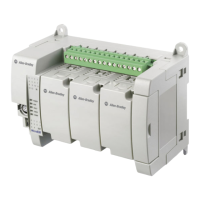
